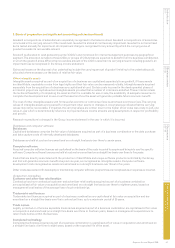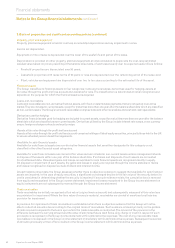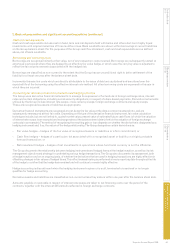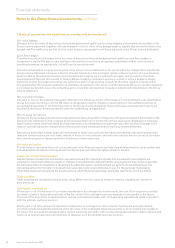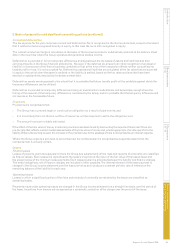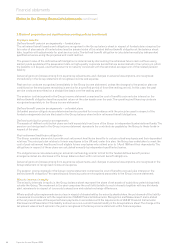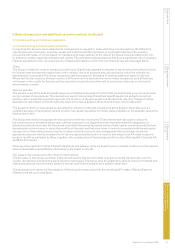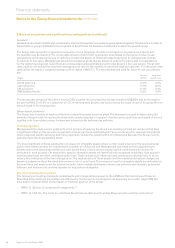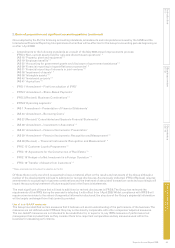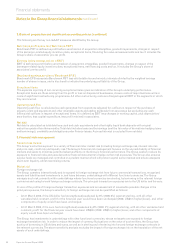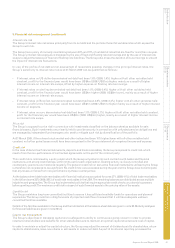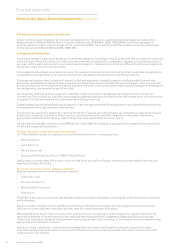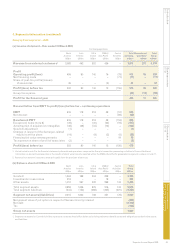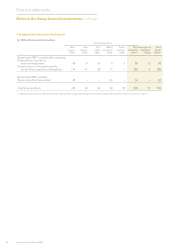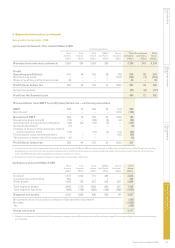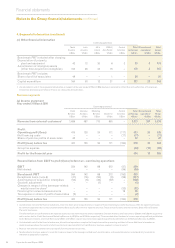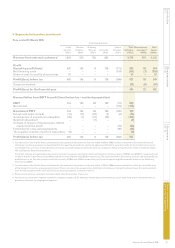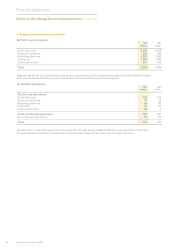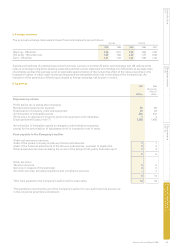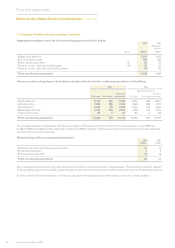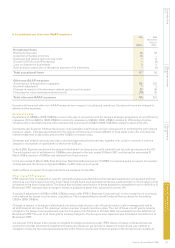Experian 2009 Annual Report Download - page 93
Download and view the complete annual report
Please find page 93 of the 2009 Experian annual report below. You can navigate through the pages in the report by either clicking on the pages listed below, or by using the keyword search tool below to find specific information within the annual report.
91Experian Annual Report 2009
Introduction
2 – 7
Business review
8 – 43
Governance
44 – 72
Financial statements
Group nancial statements
3. Financial risk management (continued)
Interest rate risk
The Group’s interest rate risk arises principally from its net debt and the portions thereof at variable rates which expose the
Group to such risk.
The Group has a policy of normally maintaining between 30% and 70% of net debt at rates that are xed for more than one year.
The Group’s interest rate exposure is managed by the use of xed and oating rate borrowings and by the use of interest rate
swaps to adjust the balance of xed and oating rate liabilities. The Group also mixes the duration of its borrowings to smooth
the impact of interest rate uctuations.
In view of the prole of net debt and an assessment of reasonable possible changes in the principal interest rates, the
Group’s sensitivity to interest rate risk as at 31 March 2009 can be quantied as follows:
If interest rates on US dollar denominated net debt had been 1.6% (2008: 1.4%) higher with all other variables held
-
constant, prot for the nancial year would have been US$4m (2008: US$1m) higher, mainly as a result of higher
interest income on interest rate swaps, offset by higher expense on oating rate borrowings.
If interest rates on sterling denominated net debt had been 1.0% (2008: 0.4%) higher with all other variables held
-
constant, prot for the nancial year would have been US$4m higher (2008: US$8m lower), mainly as a result of higher
interest income on interest rate swaps.
If interest rates on Brazilian real denominated net debt had been 2.9% (2008: 2.4%) higher with all other variables held
-
constant, prot for the nancial year would have been US$1m (2008: US$1m) higher mainly as a result of higher interest
income on deposits.
If interest rates on euro denominated net debt had been 1.0% (2008: 0.7%) higher with all other variables held constant,
-
prot for the nancial year would have been US$2m (2008: US$3m) higher, mainly as a result of higher interest income
on interest rate swaps.
Price risk
The Group is exposed to price risk in connection with investments classied on the balance sheet as available for sale
nancial assets. Such investments are primarily held to provide security in connection with unfunded pension obligations and
are managed by independent fund managers who seek to mitigate such risk by diversication of the portfolio.
At 31 March 2009, if the relevant stock market and other indices had been 10% higher/lower with all other variables held
constant, no further gains/losses would have been recognised in the Group statement of recognised income and expense.
Credit risk
In the case of derivative nancial instruments, deposits and trade receivables, the Group is exposed to credit risk, which
results from the non-performance of contractual agreements on the part of the contract party.
This credit risk is minimised by a policy under which the Group only enters into such contracts with banks and nancial
institutions with strong credit ratings, within limits set for each organisation. Dealing activity is closely controlled and
counterparty positions are monitored regularly. The general credit risk on derivative nancial instruments utilised by the Group
is therefore not considered to be signicant. No credit limits were exceeded during the year and the Group does not anticipate
that any losses will arise from non-performance by these counterparties.
At the balance sheet date trade receivables with nancial institutions accounted for some 37% (2008: 41%) of total trade receivables
in the UK and some 33% (2008: 38%) of total trade receivables in the USA. The remaining balances are distributed across multiple
industries and geographies. The Group has implemented policies that require appropriate credit checks on potential customers
before granting credit. The maximum credit risk in respect of such nancial assets is the carrying value of the assets.
Liquidity risk
The Group maintains long-term committed facilities to ensure it has sufcient available funds for operations and planned
expansions. The Group monitors rolling forecasts of projected cash ows to ensure that it will have adequate undrawn
committed facilities available.
Details of the facilities available to the Group and their utilisation at the balance sheet date are given in note 22. Maturity analyses
for nancial liabilities are given in note 26 (d).
Capital risk management
The Group’s objectives in managing capital are to safeguard its ability to continue as a going concern in order to provide
returns for shareholders and benets for other stakeholders and to maintain an optimal capital structure and cost of capital.
In order to maintain or adjust the capital structure, the Group may adjust the amount of dividends paid to shareholders, return
capital to shareholders, issue new shares or sell assets to reduce net debt. As part of its internal reporting processes the


